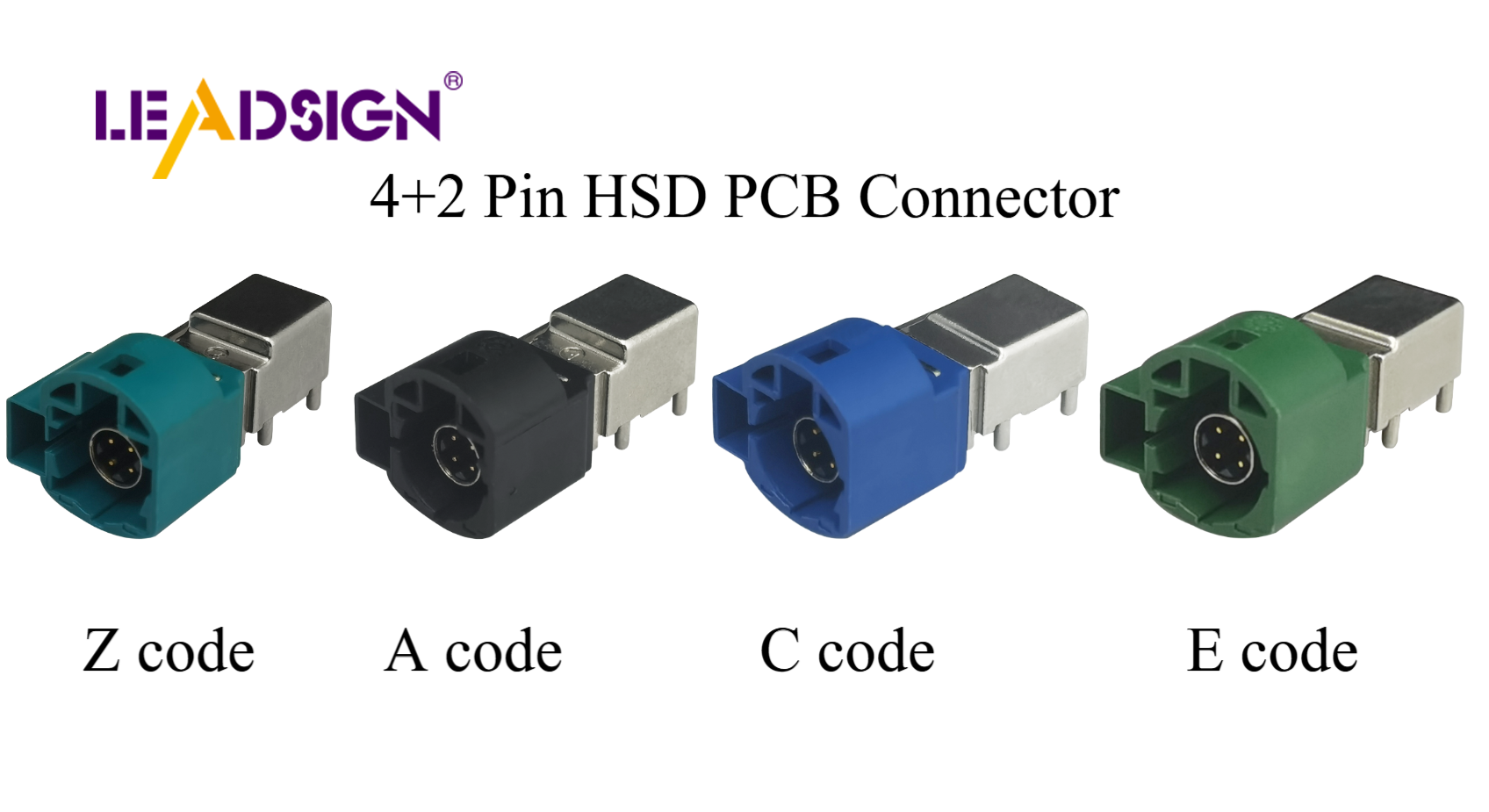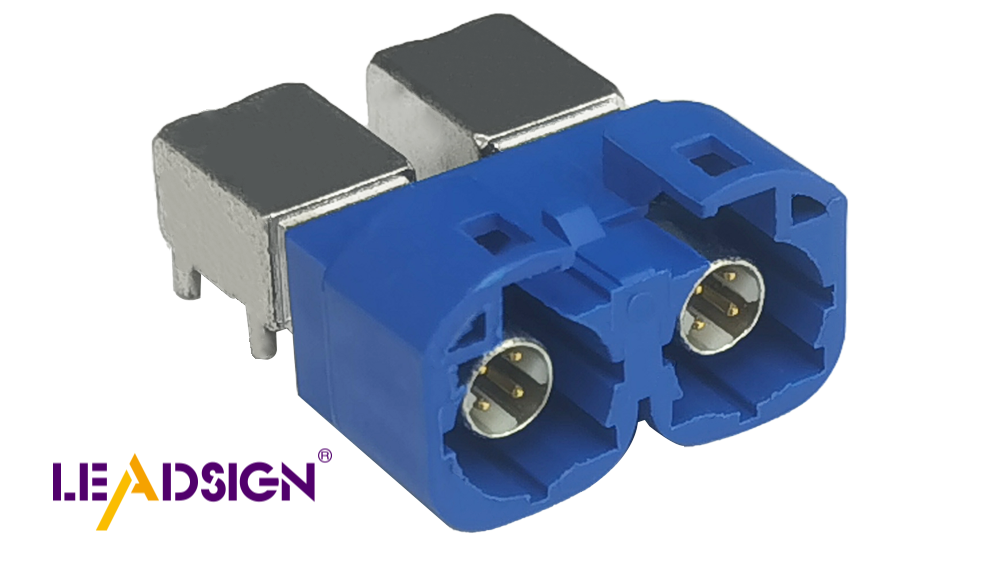What Sets HSD Cables Apart for Data Transmission in Automotive Applications

High-speed data (HSD) connectors and cables are very important in cars. They help send data quickly, allowing car parts to communicate easily. These cables keep signals strong and reduce interference. The demand for HSD cables is growing fast and may reach $21.17 billion by 2031. This growth is due to uses like smart driving systems and entertainment features. HSD cables follow rules like AUTOSAR, ISO, and Ethernet to stay reliable and work well in modern cars.
Key Takeaways
HSD cables help send data quickly in cars. They support systems like ADAS and entertainment.
These cables are made to handle tough conditions. They work well in bad weather and rough places.
People need more HSD cables now. By 2031, their value may reach $21.17 billion, showing how important they are for today's car technology.
What Are High-Speed Data (HSD) Connectors and Cables?
Definition and Purpose
High-speed data (HSD) connectors and cables are key parts in cars. They help send data fast between different car systems. These cables improve sound and video in entertainment systems. They also make GPS work better with live maps and traffic updates. In safety systems, HSD cables link cameras, radar, and lidar sensors. This helps cars stay safe and work well. They also connect USB devices and infotainment systems to other car electronics. Because they send lots of data quickly, they are very important in modern cars.
Development and Standardization
HSD cables have changed to meet new car needs. Engineers use twisted-pair quad cables to block outside noise. This keeps them working well. Strong materials make them last in tough car conditions. Over time, they followed strict rules to ensure quality and compatibility. Meeting these rules has made people trust them more. They are now a top choice for sending data in cars. Whether for entertainment or safety, HSD cables are vital in today’s vehicles.
Design and Construction
HSD cables are different from other data cables. They send data faster with high-bandwidth signals. Special designs keep signals strong and reduce interference. They work with many devices and support different screen settings. Made with strong materials, they last a long time. Features like locks and crimp connections make them reliable. These designs make HSD cables a great choice for cars and other industries.
Key Features of HSD Cable Assemblies

High-Speed Data Transmission
HSD cables send data very fast and efficiently. They can transfer data at speeds up to 1 Gbit/s or even 8 Gbit/s in advanced systems. This helps car systems communicate instantly. These cables use special pin-hole contact technology for strong signals. Shielding protects data from errors and interference. They are built tough to handle heat, vibrations, and stress, making them perfect for cars.
Strong Signal Quality and Less Interference
Good signal quality is important for cars to work well. HSD cables use shielding to block electromagnetic interference (EMI). This keeps signals clear and steady. Low Voltage Differential Signaling (LVDS) saves power and keeps signals strong. These features ensure accurate data transfer, even in noisy electrical areas.
Long-Lasting and Tough in Harsh Conditions
Cars face tough conditions, but HSD cables are made to last. They use materials that resist heat, cold, moisture, and chemicals. This prevents rust and damage. Sealing rings and locks add extra protection. These cables work well in extreme weather, giving you confidence they won’t fail.
Works with Many Systems
HSD cables work with many car systems like Ethernet, USB, and LVDS. This makes it easy to connect different parts of the car. Their shielding reduces interference for smooth data transfer. By supporting many systems, these cables make car networks faster and more reliable.
Applications in Automotive Data Transmission

Advanced Driver Assistance Systems (ADAS)
HSD cables are important for advanced driver assistance systems (ADAS). These systems need fast data to work well. They help with features like lane warnings and cruise control. HSD connectors provide quick and strong data transfer. They link cameras, radar, and lidar for smooth teamwork. By improving car wiring, HSD cables make driving safer and smarter.
Infotainment and Display Units
Modern cars need fast data for infotainment and displays. HSD cables make these systems work smoothly and quickly. They handle large data for clear sound and video. These cables connect GPS for live updates and better navigation. They also support cameras and sensors in infotainment systems. With HSD cables, driving becomes more fun and connected.
Cameras, Sensors, and GPS
HSD cables connect cameras, sensors, and GPS in cars. Their special design blocks outside noise for clear data. These cables meet strict rules for safety and quality. They provide the speed needed for live GPS updates. They also help car parts communicate without delay. HSD cables are key for modern car systems.
Ethernet Backbone for Vehicle Communication
HSD cables support Ethernet, which connects car systems. They send data fast and with little delay for quick decisions. These cables work with Ethernet to link sensors and controllers. As Ethernet gets faster, HSD cables stay reliable. Their design keeps them strong even in noisy environments.
HSD cables are important for sending data quickly in cars. Their strong build helps them work well in tough conditions. They give clear signals and fast data transfer. Engineers like how they improve car systems. These cables will keep changing with new trends like more speed and smaller sizes.
The need for HSD cables is growing and may reach $21.17 billion by 2031.
They work well with advanced systems like ADAS and entertainment features.
Designs like twisted-pair cables and following rules make them reliable.
HSD cables will stay important as car technology gets better, making driving safer and more connected.
FAQ
How are HSD cables unique compared to other car cables?
HSD cables send data quickly and reliably. Their special design reduces signal problems. They also work well with many car systems, making them great for advanced uses.
Can HSD cables survive tough car conditions?
Yes, HSD cables are made from strong materials. They can handle heat, water, and chemicals. Their tough build keeps them working in extreme weather.
Do HSD cables work with fast connectors?
HSD cables fit perfectly with fast connectors. Together, they move data quickly and keep connections strong for modern car systems.
See Also
Why HSD Connectors Are Essential for Automotive Applications
Understanding the Role of HSD Connectors in Automotive
HSD Connectors: Key Benefits for Automotive Infotainment

